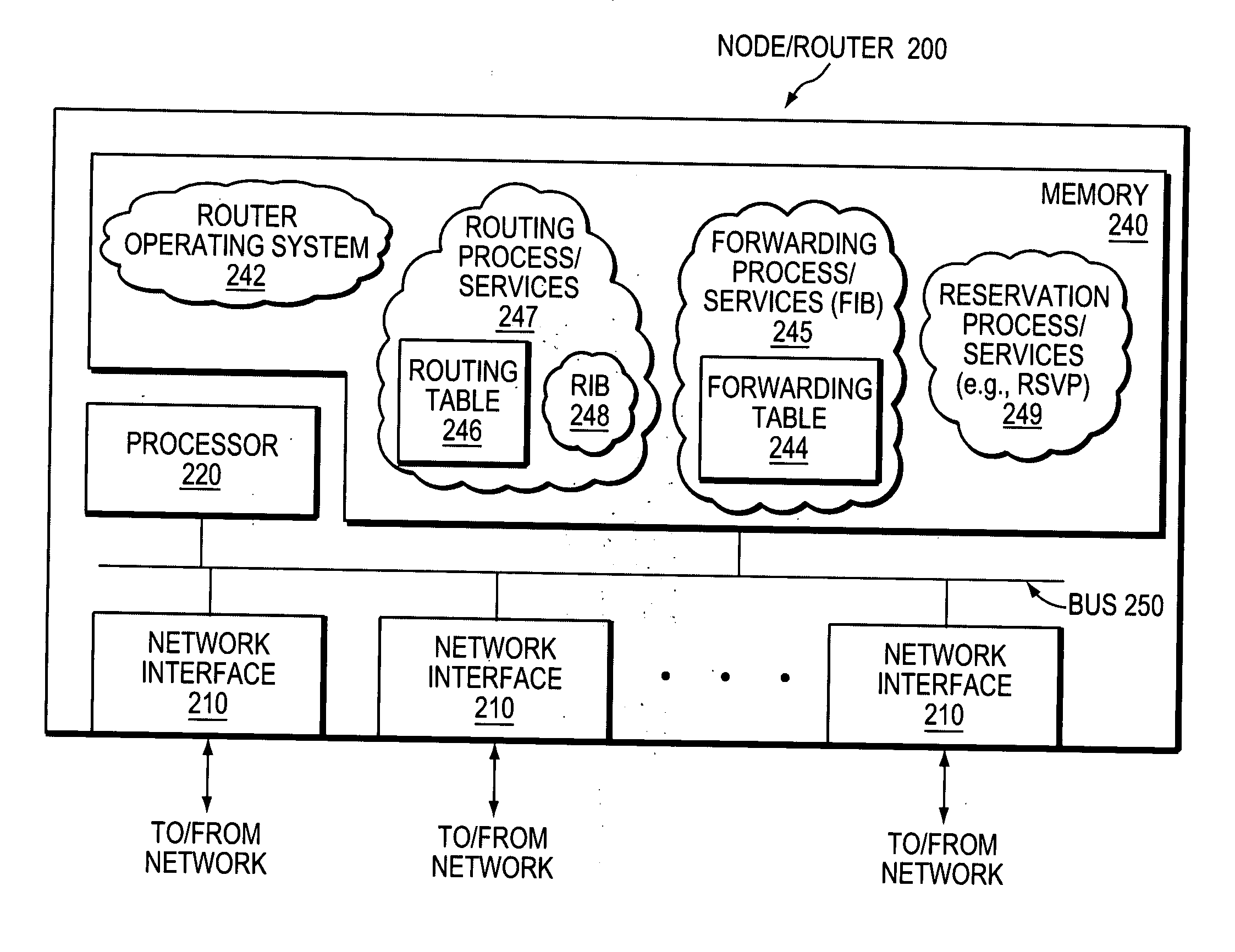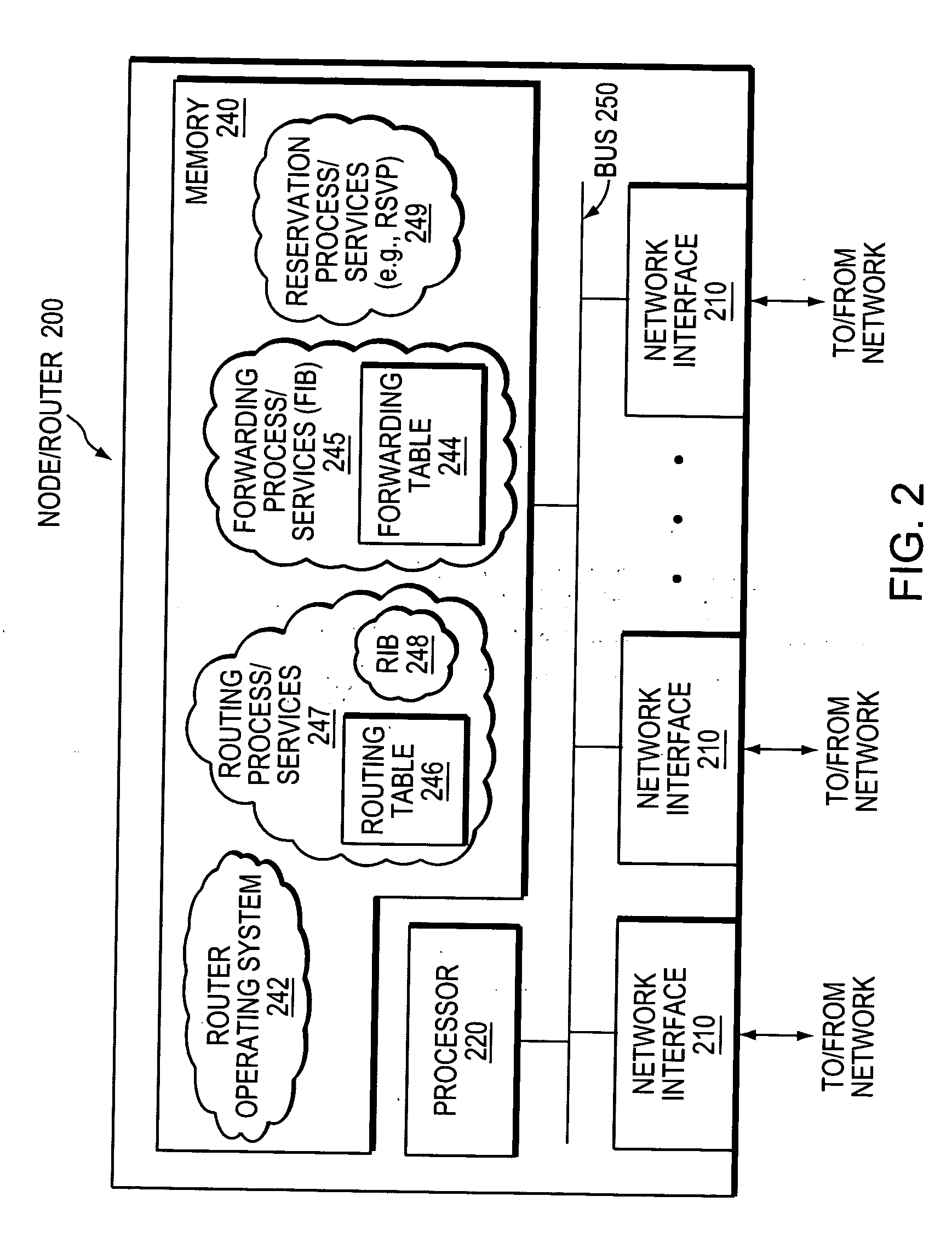Efficiently decoupling reservation and data forwarding of data flows in a computer network
- Summary
- Abstract
- Description
- Claims
- Application Information
AI Technical Summary
Benefits of technology
Problems solved by technology
Method used
Image
Examples
Embodiment Construction
[0034]FIG. 1 is a schematic block diagram of an example computer network 100 that may be advantageously used with the present invention. The network 100 comprises a plurality of interconnected network nodes, such as routers A-D (e.g., intra-domain routers) interconnected through links as shown. The links between the routers may have associated metric values (e.g., costs), and available bandwidth values, as described below, and may be established over wide area network (WAN) links, local area network (LAN) links, point-to-point links, wireless LAN links, etc., to form the network 100. Illustratively, network 100 may be contained within a single autonomous system (AS) or area, or may span multiple areas under certain circumstances as will be understood by those skilled in the art. An AS is herein defined to be a group of intermediate nodes, such as inter-domain and / or intradomain routers, within a network that are subject to a common authority and execute one or more inter-domain and / ...
PUM
 Login to View More
Login to View More Abstract
Description
Claims
Application Information
 Login to View More
Login to View More - R&D
- Intellectual Property
- Life Sciences
- Materials
- Tech Scout
- Unparalleled Data Quality
- Higher Quality Content
- 60% Fewer Hallucinations
Browse by: Latest US Patents, China's latest patents, Technical Efficacy Thesaurus, Application Domain, Technology Topic, Popular Technical Reports.
© 2025 PatSnap. All rights reserved.Legal|Privacy policy|Modern Slavery Act Transparency Statement|Sitemap|About US| Contact US: help@patsnap.com



